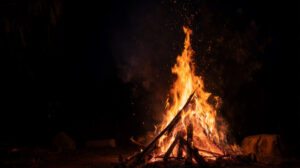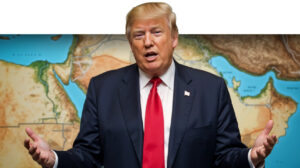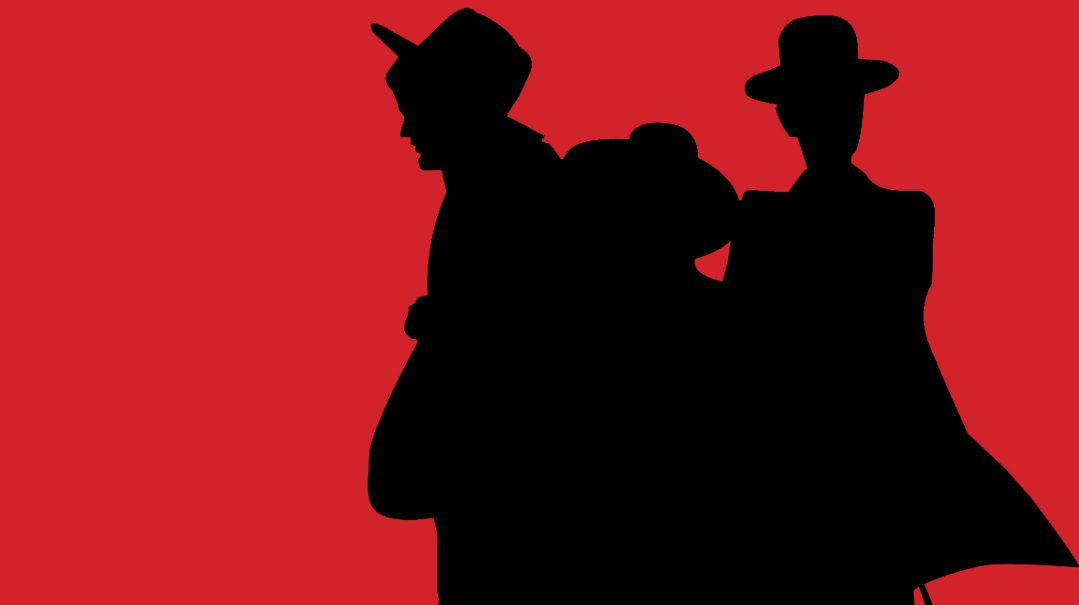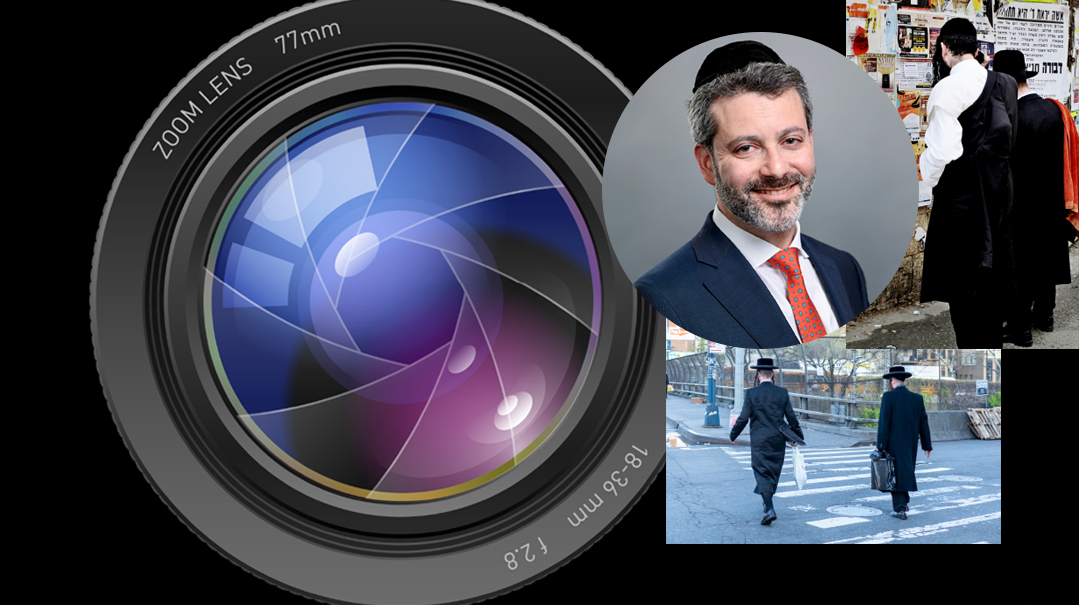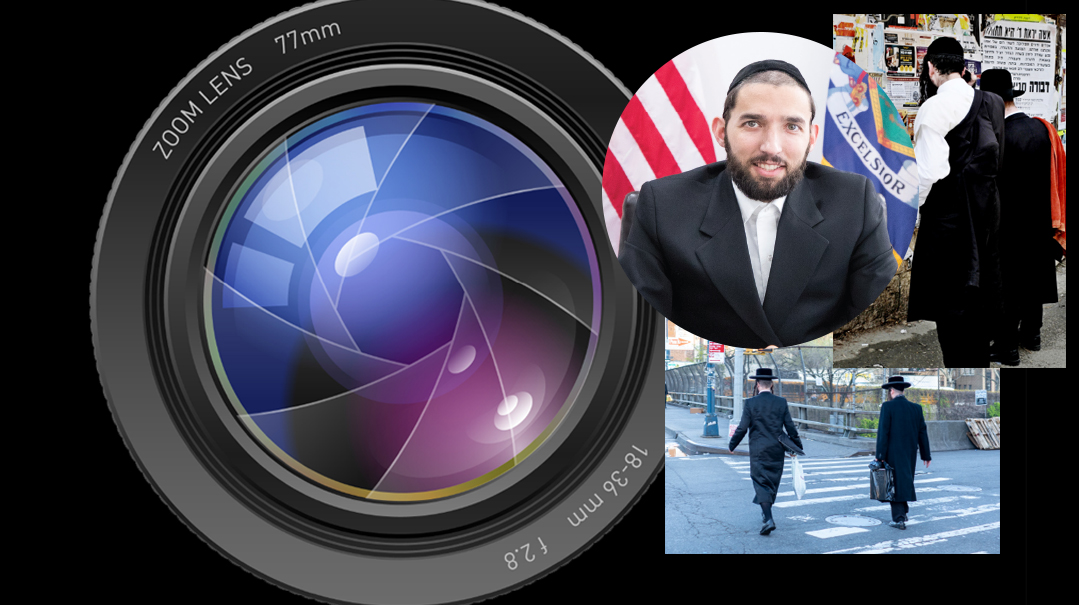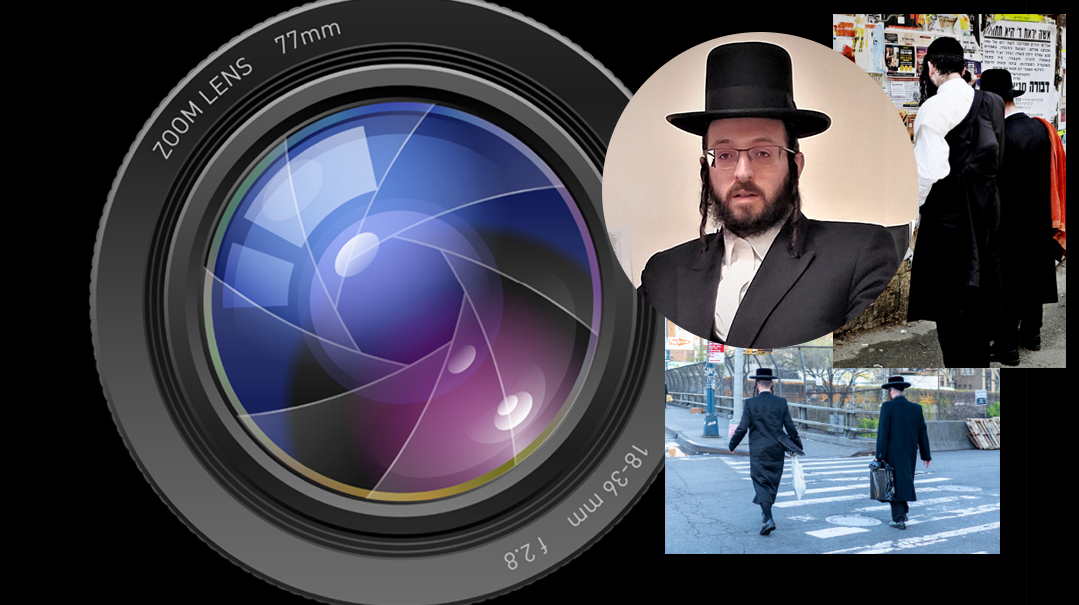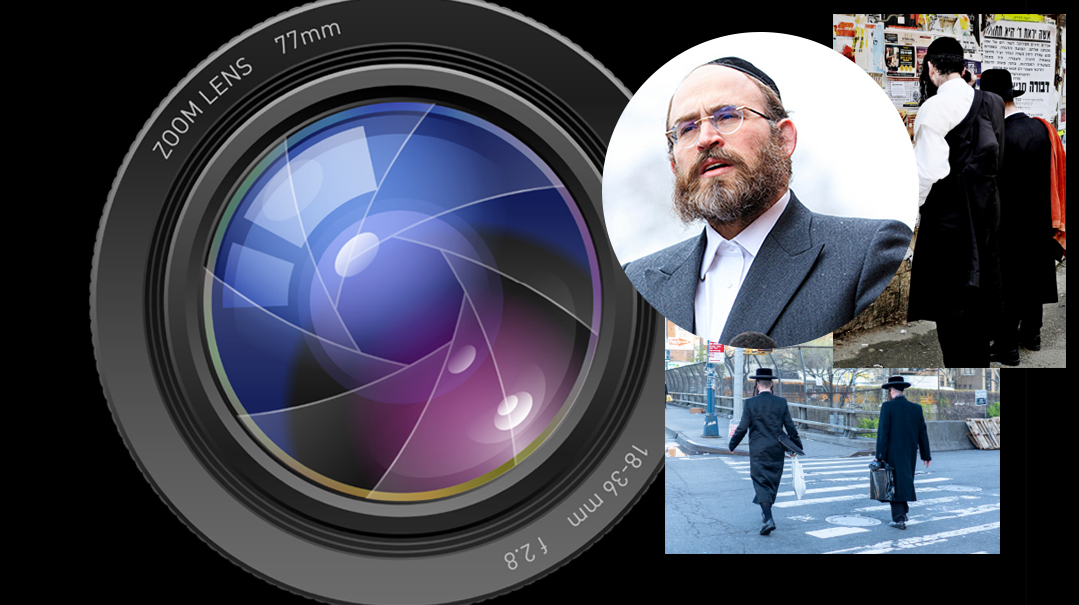Yitzchak Nachshoni: You’re an Ambassador

"If we’d live and act with the awareness that we’re ambassadors, a lot of the problematic images that have the secular shreying gevalt could have been averted"
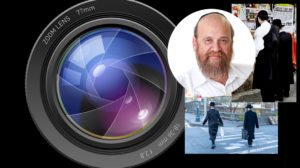
Yitzchak Nachshoni is currently editor- in- chief of the chareidi Merkaz Ha’inyanim newspaper chain and a regular commentator on chareidi radio stations. He started his career at the Galei Tzahal radio station during his eight-year service in the IDF. He subsequently founded Yom Hashishi, the first independent commercial newspaper in the chareidi sector, and served as its editor for 18 years.
Interviewed by Sharon Gelbach
What do you see as the most dangerous aspect of chareidim’s portrayal and perception in the public sphere?
I would say that generalization — the portrayal of our community as a monolithic entity — is the most dangerous, damaging aspect. Beyond the injustice inherent in generalizing, it will prove harmful also in the long term, becoming a self-fulfilling prophecy. How so? As long as the media continues to lump all the extremists together with the mainstream chareidi camp, more and more chareidim will figure, “If I’m going to be painted with the same brush as the fringe, why bother proving otherwise?” thus expanding the extremist faction.
When I say extremists, I refer to those who refuse to obey the rules, who don’t accept daas Torah, and who act on their own without taking into consideration other communities or the fact that they are causing a chillul Hashem. Sadly, this camp is indeed growing at the expense of the mainstream, especially among the youth.
The media knows how to differentiate between the extremists and the mainstream within our community. They know full well that when there is a chasunah or tish with 1,000 people, or even a levayah with 10,000 people, to say that this is how the chareidi sector conducts itself is a lie. Besides, with our sector numbering over a million souls, statistically, it’s not even one percent.
How much of this is due to our lifestyle, how much to our mistakes, and how much to misunderstandings and miscommunication?
Look, everyone makes mistakes. However, I don’t believe in making a public mea culpa. There is always place for a cheshbon hanefesh, but it needs to happen internally and out of the public eye.
Within our community there are vast differences in worldview. I don’t know if I should classify this as a mistake per se, but in my opinion a big part of our problem stems from the fact that we willingly segregate ourselves in insular communities. When we build high walls around ourselves, the general population is denied the opportunity to see us, to interact with us, and consequently, we become fair game for whatever ideas a hostile media plants in their minds.
Certainly, it’s far more pleasant and convenient to live in an all-chareidi environment. It’s wonderful to be able to walk in the middle of the street on Shabbos and Yom Tov, and seeing chillul Shabbos right outside our doorstep is upsetting. But living in our own self-protective ghetto comes at a price, and I think that we as a community must make a reckoning whether that price is worthwhile.
If you examine the neighborhoods where chareidim and secular families live together — in Petach Tikvah, Netanya, Rechovot, parts of Jerusalem or Haifa — I believe that the experience is positive for everyone involved. For the secular, it gives them a chance to see who we are, so that even when they’re bombarded with anti-chareidi images and messages, they won’t accept the slander. They’ll know better.
Needless to say, to accomplish this, we must behave and educate our children accordingly. One of my secular neighbors says he always loses against my children in the race to be the first to greet them in the morning. They see us, they interact with us, they know there’s no similarity between us and the way chareidim are depicted by the media.
People have asked me if I’m not afraid of my own children being adversely affected by the nonreligious atmosphere that they encounter outside our home. The opposite is true. Research has shown that in the mixed neighborhoods I’ve described, there are almost no incidents of frum kids going off the derech. They are proud of their frumkeit and have a strong identity. By contrast, there are children growing up in very insular communities who are curious and intrigued about what goes on among the chilonim. My children know better. They know that their secular neighbors’ grass isn’t greener and have no desire to be like them.
That said, I am witnessing a sea change in the perception of the general population toward the chareidi community. If at one time their problems with us centered around army service, public transportation on Shabbos, and why we don’t teach a core curriculum in yeshivos, today, those questions have magically disappeared. Suddenly, it’s “You’re contagious,” “You spread disease,” “You disgust me.” All those burning issues that filled pages and pages — like the Kosel compromise. Who today cares about the Kosel compromise?
Suddenly, it’s no longer a matter of ideology. Although, in truth, it never really was. It’s hatred, plain and simple.
I think one of the main reasons for this hatred is not anything that we as a community are responsible for. The successive COVID-19 lockdowns have created a situation where the general population spends a lot of time — more than ever before — in front of their screens, and those interested in slandering the chareidi sector have taken advantage of that fact. In the past, there were always a few individuals who “hated our guts,” but the majority didn’t find the chareidim all that interesting. Today, people sit in front of their TVs or phones a whole day and are bombarded by images of huge weddings or mass levayos, or a doctor who shamelessly states that there’s no room in Jerusalem’s corona wards because they are packed with chareidim. This is what they’re seeing and hearing day after day, all day. We can claim all we want that the crowds of unmasked chareidim are the minority, but our voice is not heard.
Another mistake —the huge weddings, which I find appalling. I believe that community leaders can conduct themselves as they wish, but in this case, their actions have a profound effect on the wider chareidi sector.
Families making weddings — now, that’s a different story. They are not at fault. The ones to blame are the decision- and policy-makers who failed to create a set of rules and regulations that we can abide by. When I spoke in the secular media about this matter, my interviewer thought that I was lobbying for an easing of restrictions, when actually, my point was that the Corona Cabinet must take into account each community’s distinctive needs and characteristics.
Take the example of when they restricted shul attendance to five people. Did anyone stop to think that Jews need a minyan to daven? In essence, they were completely deaf and blind to our needs (and it was the same with the Arab sector).
With regard to weddings, they made no effort to accommodate us or to find ways to make it work, such as having guests taking turns, coming for half-hour stints. Instead, they imposed uniform rules across the board. That just isn’t right. You can’t expect the public to stop making weddings for a whole year. The Corona Cabinet forced us to break the law.
I don’t think we’re to blame for the accusations — that’s the work of a media that has an interest in demonizing the chareidim. But I do think we need to do a cheshbon hanefesh for the fact that those false arguments are being believed.
Can you think of successful efforts where chareidim reached out to the media, decision-makers, or the public at large to make themselves heard or understood?What were the key elements that brought success?
Who said there was ever success? I never believed in going to the media and justifying ourselves. I’m acquainted with all the media figures in Israel. They make a living, among other things, from writing sensational headlines about the chareidim, and no one is going to change that. You can take them ten times to see the Ponevezh beis medrash. You can take them twenty times to Bnei Brak to eat cholent on Thursday night. Even if you’ve succeeded in convincing one journalist that what he’s witnessed is meaningful and good, that doesn’t mean he’s going to quit his job and start working for Mishpacha.
I once told a journalist, “I get you, this is your livelihood, and the need to earn a living is a curse. ‘By the sweat of your brow…’ But your curse is even harder because you have to create stories about me, and that’s not an easy job. You really need to sweat a lot…”
I don’t believe in talking to the media and trying to explain things. They don’t give you a chance to clarify yourself, and even if you are able to get the point across, all it takes is one photo of a large wedding and you’re back to square one.
What do you wish every starting journalist knew about our community? What’s a mistake too many of them make?
I don’t think a journalist who’s an outsider can really understand what makes us tick. Far more detrimental, however, is the trend these days where the secular media brings a journalist from our community to cover the chareidi beat. A secular journalist who’s clueless will at least make a sincere effort to understand, but when one of our own is assigned to cover chareidi affairs, they often give more than what they were asked for. As a result, they do a much better job of bringing the “goods.” It’s a problem when you have a young chareidi whippersnapper, 18 years old, who thinks that the world started when he was born, assigned to covering the most sensitive topics, and who brings in juicy neiyas. There do exist chareidi journalists in the general media who are capable of properly representing our community, but they’re few and far between. Generally speaking, it’s a difficult balance for a chareidi journalist to strike. I know because I used to work for Army Radio (Galei Tzahal), and I chose to stop working for secular media for that reason.
But the topic is far more complex. I’ve noticed that the general media follows the chareidi media and picks up a lot of material from there. The emergence of an independent chareidi media that has a presence both in print and online necessitates far more responsibility and attentiveness. Every word that’s printed or posted is viewed not only by sympathetic eyes. Just like the army has a military censor, we also need a censor to prevent the publication of material that could cause a misunderstanding at best, and chillul Hashem at worst. To this end, I would recommend the establishment of a professional chareidi hasbarah forum that would determine who is allowed to speak on behalf of the community.
How can the average frum Jew be a good ambassador?
Every Jew who is shomer Torah u’mitzvos is a potential ambassador through his very presence. You don’t need any special characteristics or rhetorical skills. The question is, where can the average chiloni encounter such an ambassador?
By definition, an ambassador resides outside his own country. Just as the Israeli ambassador exerts his influence outside of Israel, the chareidi can act as an ambassador only if he interacts with the general population, outside chareidi enclaves.
I believe that a secular person who sees, for example, a frum father and son walking to shul together, cannot fail to be impressed. I think that if we’d live and act with the awareness that we’re ambassadors, a lot of the problematic images that have the secular shreying gevalt could have been averted.
As I said, I believe that living in mixed neighborhoods is one of the most potent ways to build bridges between the sectors. I walk to shul on Shabbos wearing a tallis, not because there’s no eiruv but because I think that it’s important to impart a Jewish presence in the street on Shabbos. Yes, there’s a price to living not only among fellow chareidim, but I believe that the kiddush Hashem that ensues makes it worthwhile.
(Originally featured in Mishpacha, Issue 852)
Oops! We could not locate your form.

